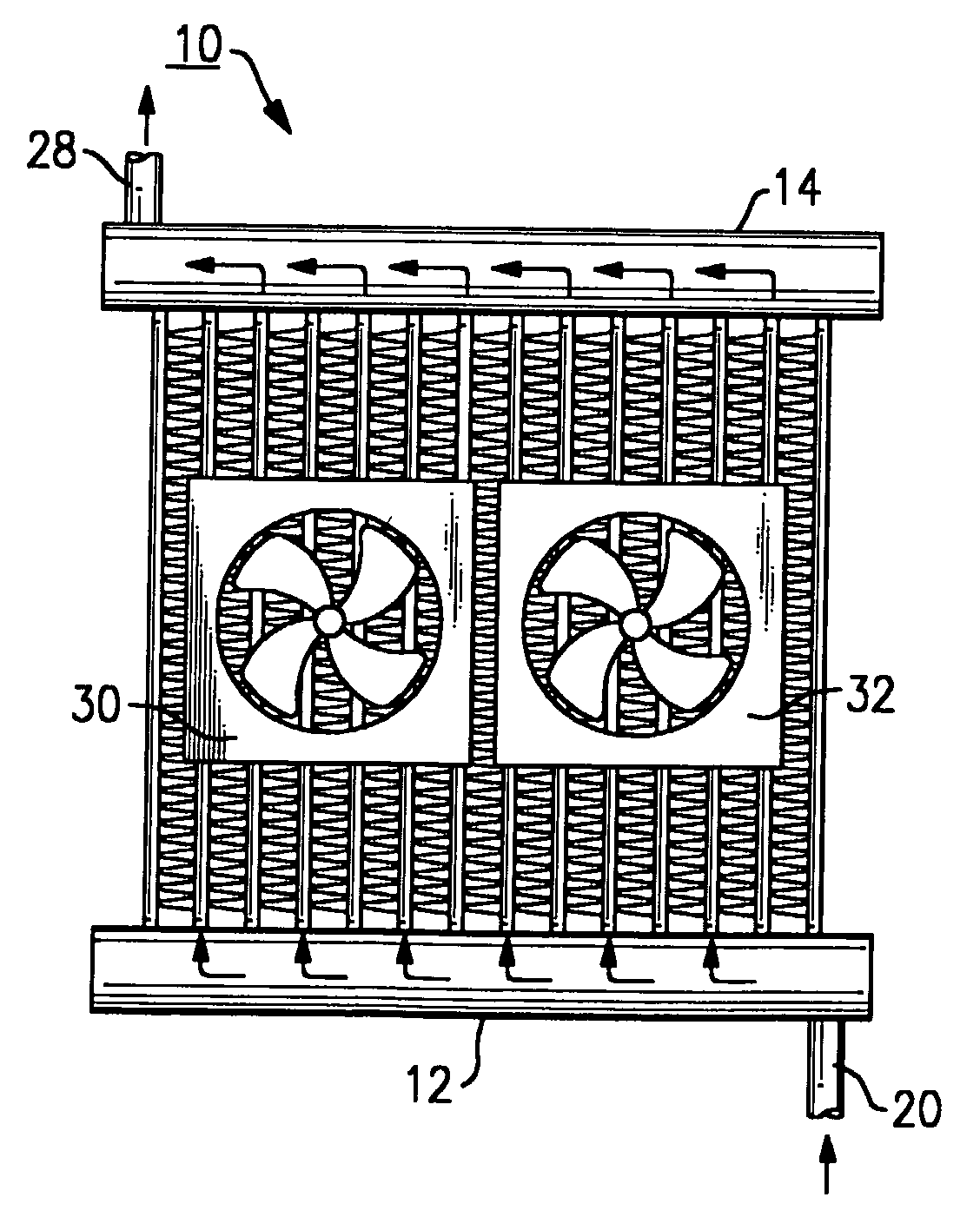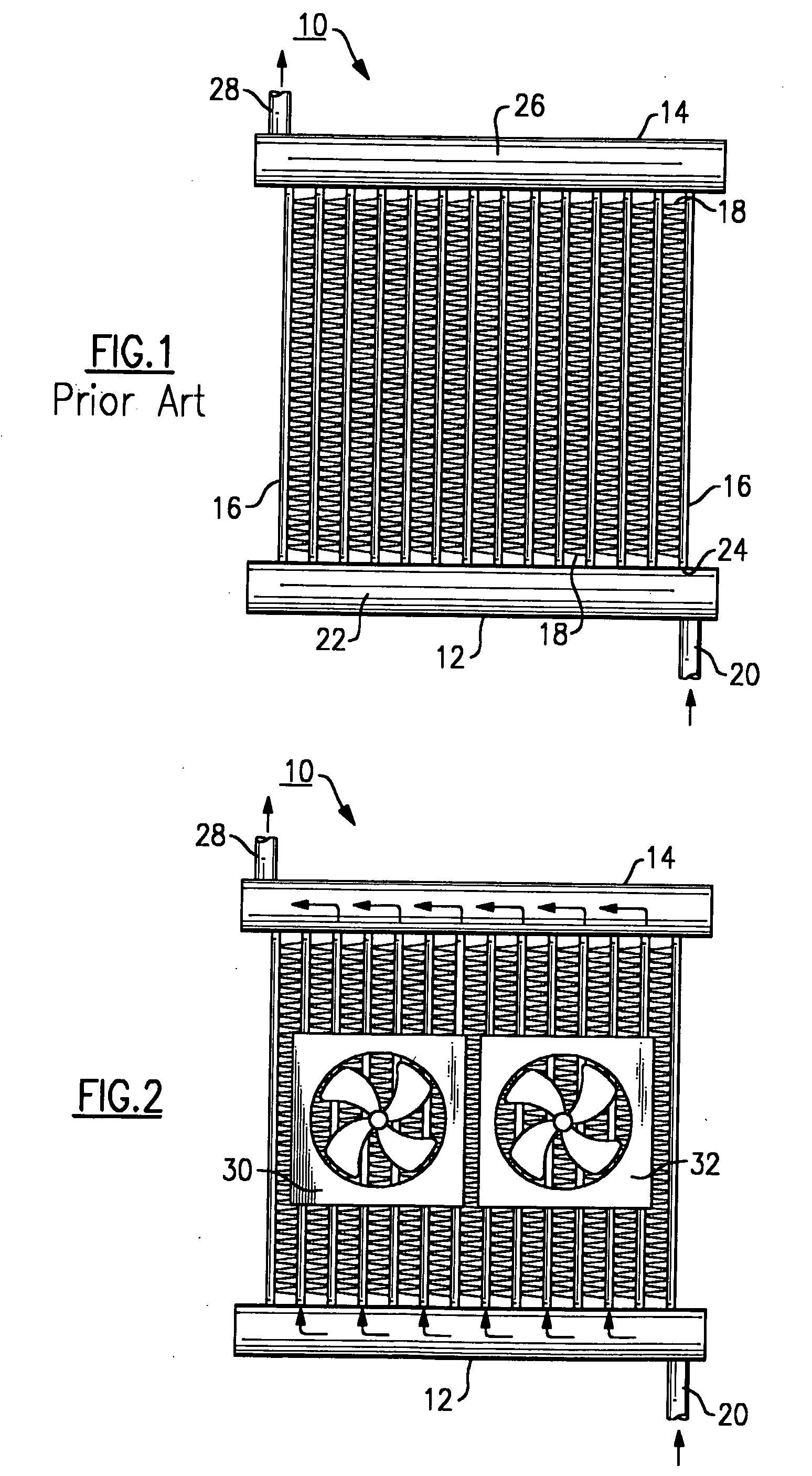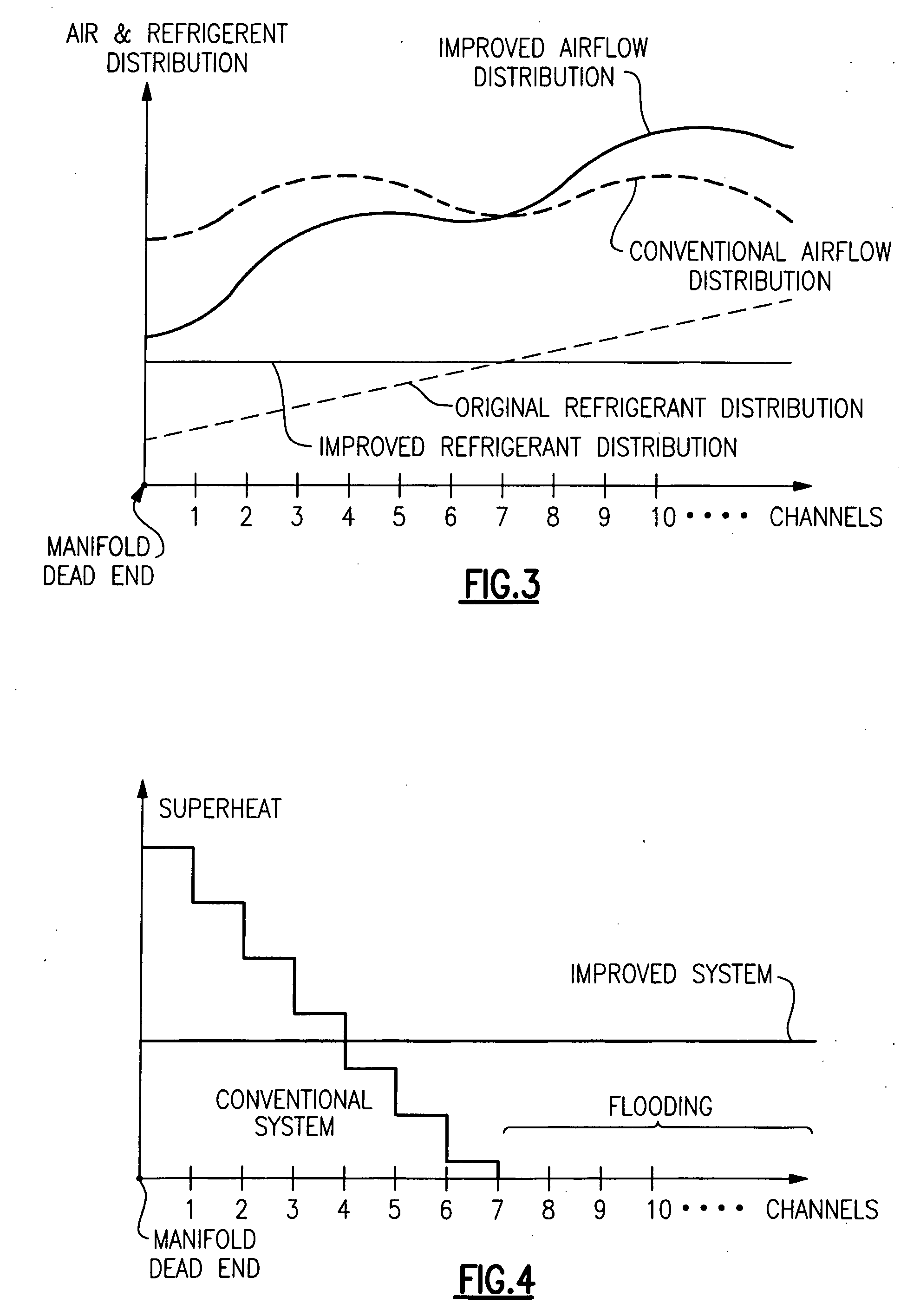Pulse Width Modulation Or Variable Speed Control Of Fans In Refrigerant Systems
a technology of variable speed control and fan, which is applied in the direction of lighting and heating apparatus, process and machine control, instruments, etc., can solve the problems of significant evaporator and overall system performance degradation, improper heat exchanger orientation, and possible refrigerant maldistribution, etc., and achieve uniform heat transfer rate
- Summary
- Abstract
- Description
- Claims
- Application Information
AI Technical Summary
Benefits of technology
Problems solved by technology
Method used
Image
Examples
Embodiment Construction
[0023]Referring to FIG. 1, a parallel flow (microchannel or minichannel) heat exchanger 10 is shown, as an example, to include an inlet header or manifold 12, an outlet header or manifold 14 and a plurality of parallel disposed channels 16 fluidly interconnecting the inlet manifold 12 to the outlet manifold 14. Generally, the inlet and outlet headers 12 and 14 are cylindrical in shape, and the channels 16 are tubes (or extrusions) of flattened or round cross-section. Channels 16 normally have a plurality of internal and external heat transfer enhancement elements, such as fins. For instance, external fins 18, uniformly disposed therebetween for the enhancement of the heat exchange process and structural rigidity are typically furnace-brazed. Channels 16 may have internal heat transfer enhancements and structural elements as well.
[0024]In operation, refrigerant flows into the inlet opening 20 and into the internal cavity 22 of the inlet header 12. From the internal cavity 22, the ref...
PUM
 Login to View More
Login to View More Abstract
Description
Claims
Application Information
 Login to View More
Login to View More - R&D
- Intellectual Property
- Life Sciences
- Materials
- Tech Scout
- Unparalleled Data Quality
- Higher Quality Content
- 60% Fewer Hallucinations
Browse by: Latest US Patents, China's latest patents, Technical Efficacy Thesaurus, Application Domain, Technology Topic, Popular Technical Reports.
© 2025 PatSnap. All rights reserved.Legal|Privacy policy|Modern Slavery Act Transparency Statement|Sitemap|About US| Contact US: help@patsnap.com



